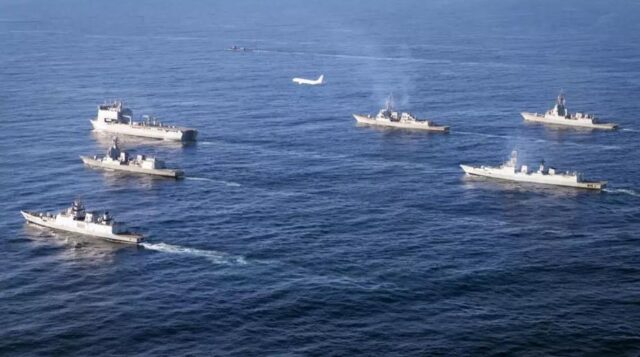History:
The Malabar Exercise commenced in 1992 as a bilateral Passage Exercise (PASSEX) between the Indian Navy (IN) and the United States Navy (USN). It was later joined by the navies of Australia and Japan too and the group came to be informally termed as the QUAD. Although it began off the Indian Malabar coast, over the years, the exercise has been carried out in the Persian Gulf, the Philippines Sea, the Bay of Bengal and the Arabian Sea. The annual Exercise takes place for a duration of 3-11 sea days and includes the conduction of complex missions like Diving Salvage Operations, Cross deck Helicopter Landing, Counter Piracy, Air defence, Surface Warfare, etc.
Multilateral Exercise:
With the participation of Japan and Australian navies, what began as a bilateral exercise of the elementary level has quickly escalated into a multilateral one overseeing the participation of high level military armada. 2022 marked the 30th year of the commencement of the exercise. Vessels like Ronald Reagan, Chancellorsville, Millius from the US; Shivalik, Kamorta from India; Stalwart, Arunta from Australia; and Hyuga, Osumi from Japan participated in the exercise. The 2022 exercise was aimed at anti-submarine combat and took place near Yokosuka around the East China Sea.
MALABAR 23:
The 27th edition of Malabar Exercise or MALABAR 23 was held off the coast in Sydney, Australia from the 11-21st of August 2023. It was carried out in two phases- the Harbour phase was from 11-15th August and the sea phase was from 16-21st August. MALABAR 23 saw the participation of the Indian Navy (IN), the US Navy (USN), Japan Maritime Self Defence Force (JMSDF), and the Royal Australian Navy (RAN). While the last exercise was aimed at understanding each other’s methodologies of maritime operation, MALABAR 23 focussed on honing interoperability of the four navies.
Interoperability drills:
India witnessed the representation of PSI Maritime Patrol Aircraft, Destroyer INS Kolkata, and Frigate INS Sahyadri. HMAS Choules and HMAS Brisbane of RAN, Raphael Peralta of USN, Shiranui of JMSDF. These were accompanied by shipbourne helicopters, submarines, maritime patrol aircrafts, and fighter aircrafts. The Sydney Harbour launched the ships for the sea phase and the air assets were operated from RAAF Amberley Brisbane. During the sea phase, Exercise Malabar carried out complex, high intensity exercises in air, on surface, and under the sea. Weapon firing and cross-deck helicopter exercises. These exercises aided in honing marine fighting skills and developing interoperability between the four navies in order to prepare for advanced maritime operations. The smooth incorporation of aircraft operations into the exercise also displays a strong compatibility of the US, Indian, and Australian maritime patrol aircraft units. Furthermore, it is an indicator of the determination of the four countries to work together with mutual cooperation towards maritime security and regional stability.
Conclusion:
The MALABAR 23 with its intense underwater and airborne drills was aimed at the prevention of any coercion in the Indo-Pacific. It will continue to foster a free, inclusive, and open Indo-Pacific that follows a rules-based international order.









